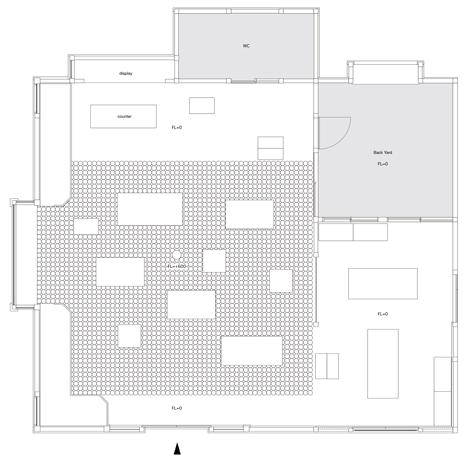Yusuke Seki uses 25,000 pieces of crockery to raise the floor of a ceramics shop
Thousands of plates, cups, saucers and bowls are stacked to form a display platform in this Japanese ceramics shop by Yusuke Seki (+ slideshow).
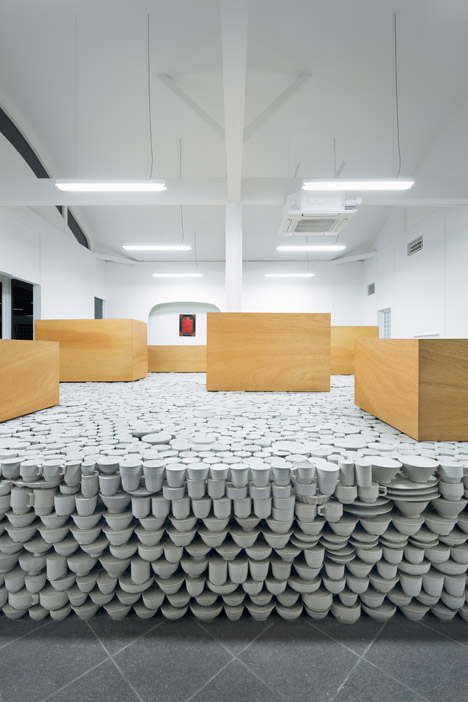
The Tokyo designer used the pieces of crockery to remodel the Maruhiro ceramics flagship store in Hasami, a town in Japan's Nagasaki prefecture that has produced pottery for around 400 years.
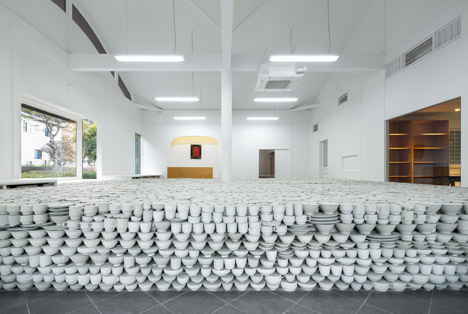
Each of the 25,000 pieces of neutral-toned tableware that make up the elevated display platform were discarded by local production facilities due to imperfections.
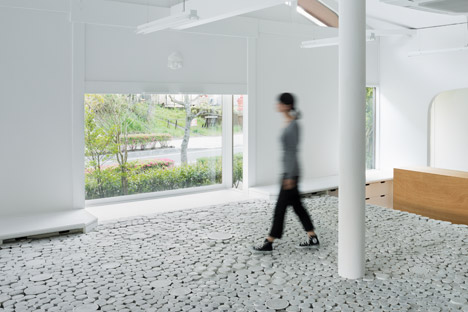
"This area has a history of ceramic tableware production and wholesale distribution dating back to the early 17th century," he said.
"[The platform] creates a sense of reverence for this history, conveying the fragility of the each individual item, engineered together to inspire and cultivate respect for the legacy on the whole."
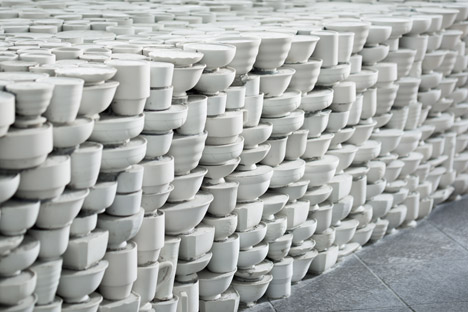
The flawed pieces are typically discarded in pits that have been used for 400 years by local potters, creating "an archaeological mille-feuille of the long industrial history of this region," according to the designer.
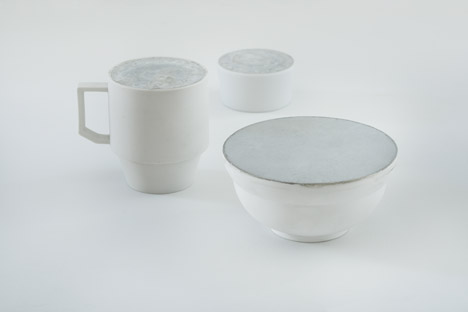
The quality control takes place after the initial firing process but before coloured glaze is applied, so each of the pieces has the same neutral colouring.
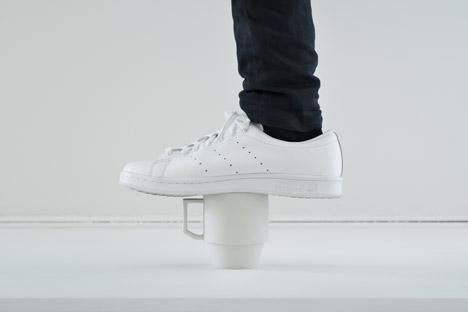
Seki filled the discarded tea sets and dinnerware to the brim with concrete, converting them into the "bricks" that form the elevated display platform. The concrete strengthens the otherwise fragile ceramic pieces, allowing them to be used as a walkable surface.
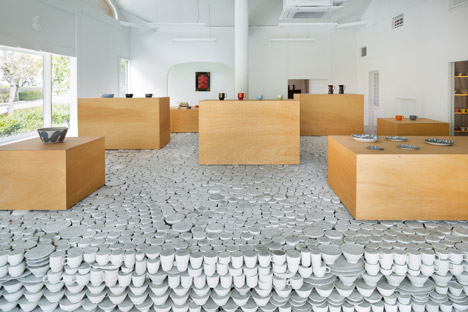
"The conceptual and experiential focus of the design is a stacked central platform, layers of locally sourced imperfect tableware and poured concrete," said the designer.
Related stories: see more projects by Yusuke Seki
"A minimal design interference – a modification in the level of the floor – not only utilises the pre-existing space to alter the perspective and experiences held by the users until the present, but also gives birth to an entirely new sense of flow within."
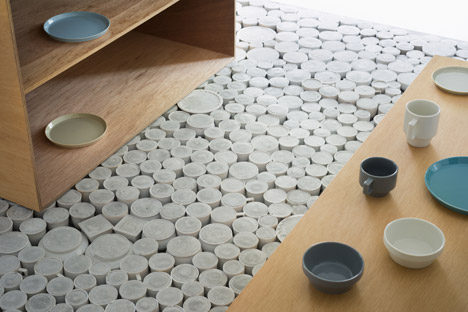
Two steps made from more traditional bricks lead customers up to the ceramic platform, which is patterned with the different-sized circular shapes across its top surface.
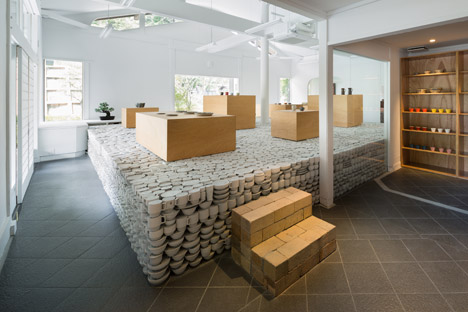
The more colourful pieces in Maruhiro's range, which are for sale in the store, are presented on wooden plinths that sit on the platform.
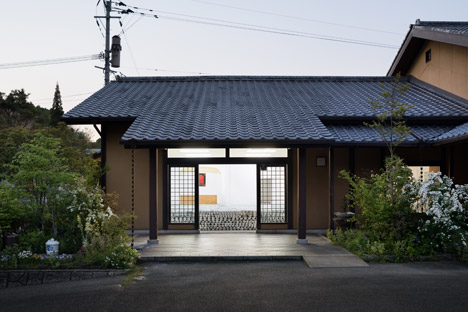
Seki has designed a number of shop and exhibition spaces to promote traditional Japanese crafts, including a kimono shop in Kyoto and an installation using hemp fabrics for a Tokyo textile brand.
Photography is by Takumi Ota.
